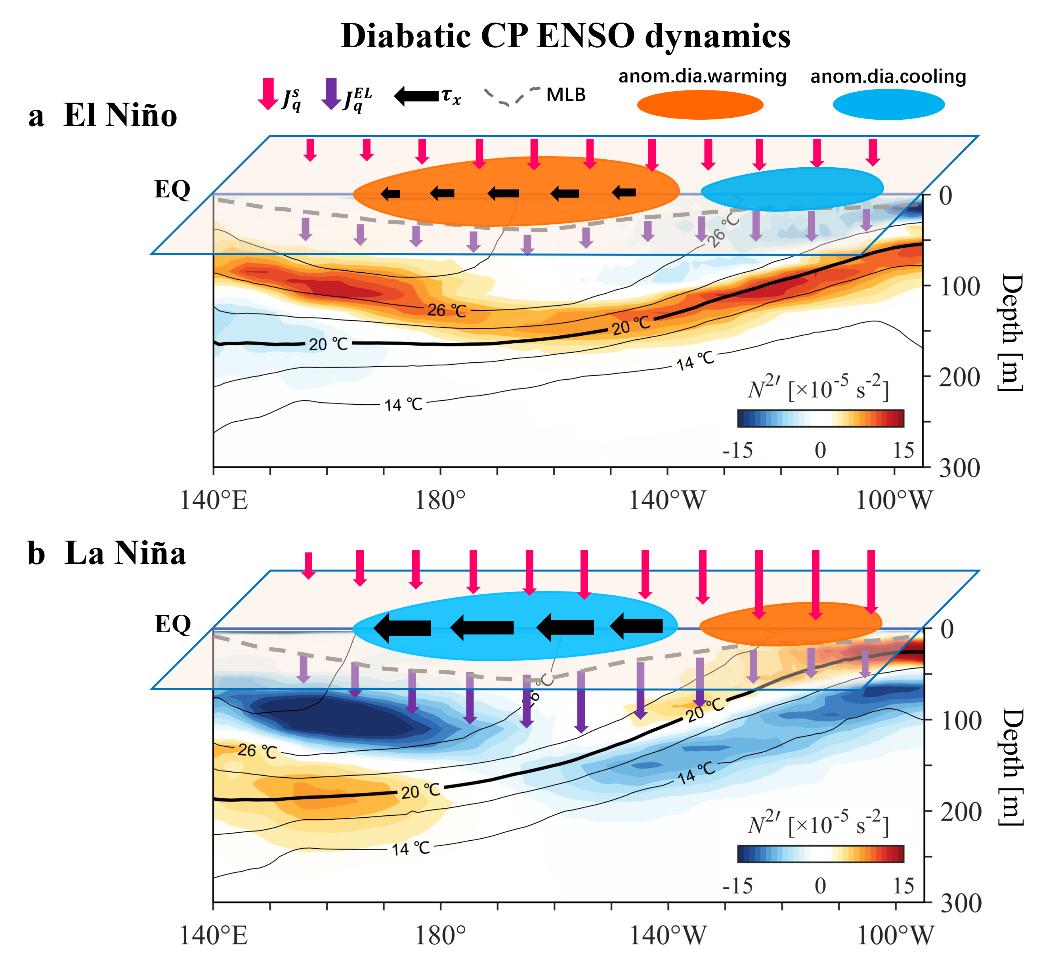
The El Niño and Southern Oscillation (ENSO) is one of the most influential interannual climate phenomena in the global ocean-atmospheric system, with profound impacts on weather patterns, particularly in the Asia-Pacific region. Accurate ENSO prediction is therefore critical for climate forecasting—yet since the 21st century, predictive skill has declined, coinciding with more signals happening in the central Pacific (CP), rather than in the eastern Pacific (EP) as it did before this century.
To investigate this shift, a research team led by Prof. WANG Fan from the Institute of Oceanology of the Chinese Academy of Sciences, along with collaborators, explored the subsurface ocean mixing's effect on ENSO. Their findings, published in Nature Communications, reveal a key diabatic feedback mechanism that amplifies CP ENSO events while suppressing EP ENSO development.
Using a novel estimation method based on wide-coverage, long-term Argo profile data, the team generated the first large-scale dataset of subsurface mixing (>40,000 profiles) across the equatorial Pacific Ocean. Their analysis revealed the important effect of ocean subsurface mixing and turbulent heat flux on the growth of both El Niño and La Niña of the CP type. Specifically, the divergence of the inward surface heat flux into the mixed layer and the outward turbulent heat flux out of the mixed layer leads to an obvious diabatic warming/cooling effect.
Furthermore, the researchers found that the diabatic effect has a significant positive impact on sea surface temperatures in the CP region. In contrast, this effect considerably suppresses temperature changes in the EP region. Overall, the zonally incoherent diabatic effect contributes to the formation of CP ENSO while inhibiting EP ENSO in its eastern part.
Notably, the feedback loop is self-reinforcing: CP ENSO-driven wind and ocean conditions modulate subsurface mixing intensity, which in turn further amplifies CP ENSO growth—with a stronger effect than other mechanisms.
"This positive feedback persists until negative feedback mechanisms eventually dominate," explained Dr. LIU Chuanyu, the study’s lead author.
This study provides a new perspective to understand the ENSO dynamics, as it emphasizes a diabatic mechanism, while the previously proposed mechanisms, of either positive or negative feedback, are all adiabatic essentially.

Photographic image of the proposed diabatic CP ENSO positive feedback. (Image by IOCAS)

86-10-68597521 (day)
86-10-68597289 (night)

52 Sanlihe Rd., Xicheng District,
Beijing, China (100864)

